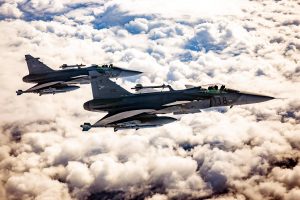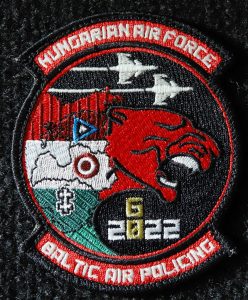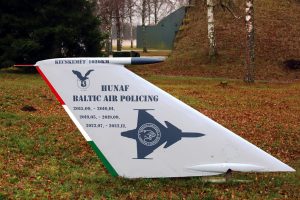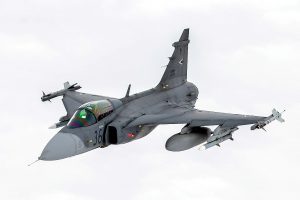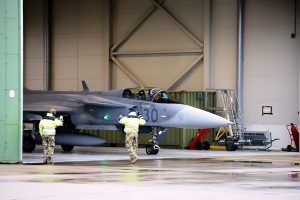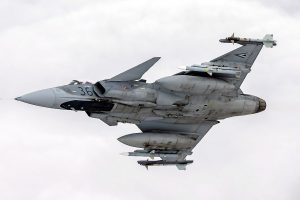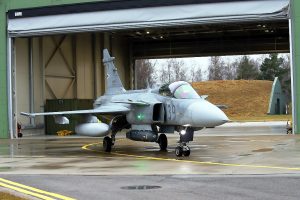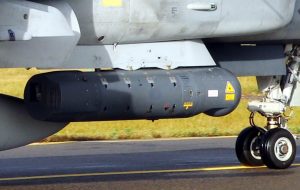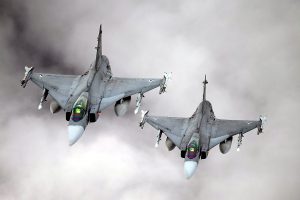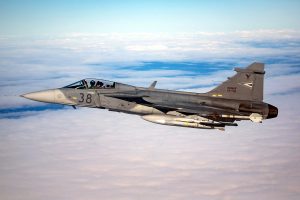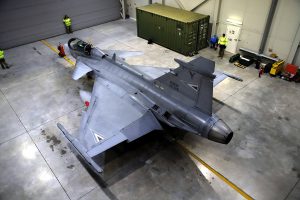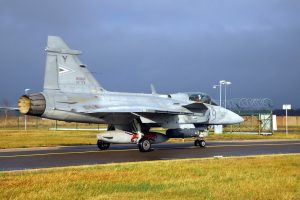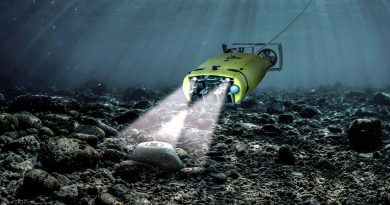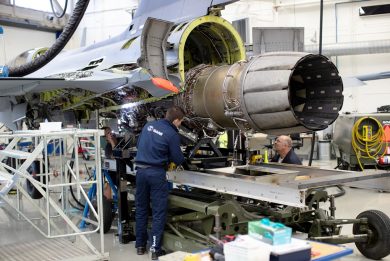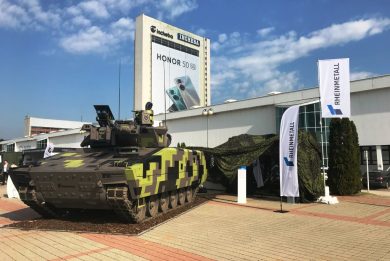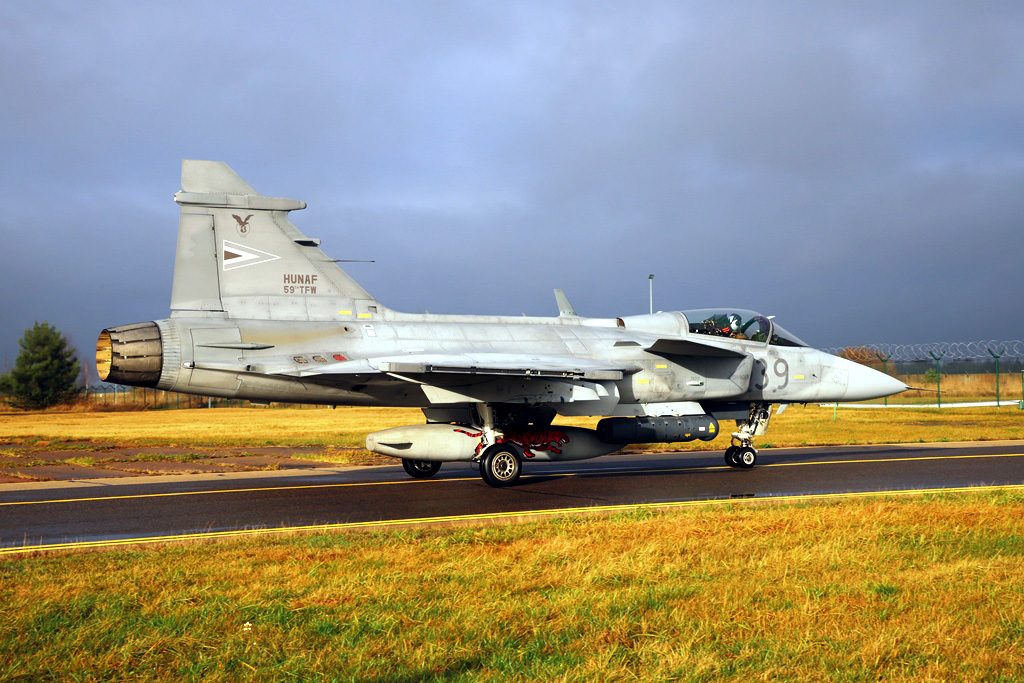
Hungarian Baltic Air Policy rotation gets to its conclusion; a first balance of the Gripen four-month deployment
On 29 March 2004 Lithuania, together with six other countries, officially became member of the Atlantic Alliance. Since then the Šiauliai Air Force Base, located some 200 km North-West of Vilnius, hosted NATO’s Baltic Air Policing fighter detachments, rotations being visually evident on the board in the main meeting room of the HQ building, where each contingent attached its badge.
On December 1st 2022 the four Saab Gripen C belonging to the Hungarian Air Force, which has led the Baltic Air Policing (BAP) in the last four months, will perform their last take off from Šiauliai heading south, this time not for a scramble but for redeploying on their home base, the 59th Air Force Base of the Hungarian Defence Forces located in Kecskemét, 80 km south of Budapest.
Two weeks before the end of their rotation the four Gripen C deployed to Lithuania, call-sign Puma from the name of the Hungarian Air Force only fighter squadron, had flown 275 hours for a total of 225 missions. Of these only a minority, 18 in total, where Alpha Scrambles carried out to identify and accompany Russian aircraft flying in the area, actually less than in past redeployments, which shows well how much since February 24th the Russian Air Force activity is concentrated in the area around Ukraine. “Their attitude is not friendly but it is also not aggressive,” Lt.Col. Attila Ványik, the Hungarian Defence Forces BAP Block 60 commander explains; as said Hungary is the leading nation of the 60th BAP rotation since the operation beginning in March 2004, hence the Block 60 definition.
In mid-November the BAP was made of the Hungarian detachment, three other nations providing air assets, Poland with four F-16C deployed on the same Lithuanian base, Germany with four Typhoons deployed on the Ämari Air Base in Estonia, and Italy, also with four Typhoons, operating out of the Malbork Air Base in Poland; at the beginning of the Block 60 deployment five more Gripen C were present at Šiauliai, those of the Czech Air Force detachment, which was replaced by the Polish one on October 1st.
The chain of command sees at the top the Headquarters Allied Air Command located at Ramstein, Germany, providing Operational Control, Tactical Command falling on Combined Air Operations Centre Uedem, in Germany. Tactical Control is provided by the Control and Reporting Centre of Karmėlava, Lithuania, which ensures the ground control intercept function, the Wing Operations Centre in Šiauliai being the operational element. Here the Hungarian HQ plans the weekly sorties; since a few months a rotational scheme has been adopted, one of the four detachments being on “cold week”. This means it is not obliged to keep a two-ship element in Readiness State 15, that is aircraft must be airborne within 15 minutes from scramble, with two more fighters armed and ready to act as backup. “This allows a greater flexibility in terms of training,” Maj. József “Joe” Papp, the Hungarian detachment operations office explains to EDR On-Line. That said, while the three other contingents are “hot”, the “cold” one must be ready to provide two armed aircraft ready to take off in 3 hours.
Beside the aforementioned Alpha Scrambles, the “Puma” call sign Gripens carried out at the date of our visit 60 Tango Scrambles, for training purposes, while a Sierra Scramble was carried out during a NATO evaluation, the aircraft reaching the runway but not leaving the soil, the purpose being to verify times and procedures. Ten times Hungarian Gripens were put on high alert, which means Readiness State 5, aircraft in hangars with engine running ready for take-off in five minutes, while 23 times Pumas were put on Readiness State 10, with APU running. Overall 35 training flights were performed, which included air-to-air, air-to-ground and fly-by missions, with numerous Close Air Support sorties carried out to cooperate with the Joint Terminal Attack Controller community during multinational training.
During a four-month rotation, Hungarian pilots remain on site for one month, go back home for one month and redeploy for another month, while technical personnel remains two month in a row before being replaced. This allows spreading the experience on a higher number of personnel, raising the standard of the whole fighter squadron which has in total 14 Gripens, 12 C-model and two D-model, which are usually hosted at Kecskemét ensuring safe skies above Hungary under NATO’s southern Combined Air Operations Centre at Torrejón, Spain.
Overall the Hungarian detachment in Šiauliai deploys six plus one pilots; this allows having two pilots on duty, two in rest and two in training, an extra pilot being Lt.Col. Ványik, who obviously has numerous other duties being the commander. Of the 78 Hungarian personnel, 75 are based on the Lithuanian base, one being deployed in Ueden and two in Karmėlava. Of those, 25 are technicians who are split into two groups, one dedicated to operational aircraft and one carrying out maintenance and troubleshooting on remaining aircraft should the need occur. “In fact for daily operations we have in service two technicians per each aircraft,” Maj. Papp explains.
The reduced number of personnel needed for the turnaround is typical of the Gripen, which was designed by Saab according to the requirements of the Swedish Air Force, the service deploying these aircraft on dispersed bases where they are serviced in small aprons in the forests, stretches of roads being used as runways. Moreover these aircraft are usually serviced by conscript personnel, turnaround operations being therefore kept as simple as possible, while the turnaround time is also a key factor in order to allow a high number of sorties, should the need arise. Maintenance assets deployed in Lithuania allowed carrying out basic operations and troubleshooting, for example no engine replacement would have been possible. When some subsystem had to be repaired beyond the capacity of deployed assets, the aircraft was flown to its main base, slightly more than one-hour flight, repaired, and sent back to base, usually on the same day.
EDR On-Line could witness the two-man ground crew in operation as the morning sortie was prepared. Being the Hungarian detachment in a “cold week” the Gripen Cs were unarmed, the usual load in air policing missions being two AIM-120 AMRAAM beyond-visual-range air-to-air missile and two AIM-9 short-range IR missiles, together with the full load of 27 mm ammunition for the Mauser BK-27 cannon. “Usually one aircraft is fitted with the Litening III pod while the second pilot carries night vision goggles,” Maj. Papp states. An extra fuel tank is usually carried on the central pylon.
“Puma 39” was awaiting its pilot, Lt.Col. Ványik, who was off for a reconnaissance flight along the border, his fighter being fitted with the pod and two drop tanks under the wings. A two-ship formation made of “Puma 38” and “Puma 30” moved on the runway before the detachment commander, aimed at a box in the Baltic sky where the two Gripen C would perform one-versus-one air-to-air training, both fitted only with the central line tank.
The cloud base was pretty low, which is typical for this area at that time of the year; this obliges to have an alternate base available where ground crews would be dispatched in case of need, however in the current rotation this never happened. Here too the small logistic footprint of the Gripen would have been an advantage over bigger and more complex aircraft. Asked on the interest of the Hungarian Air Force in the deployability on dispersed operating surfaces of the Gripen, following what is done in Sweden, officers confirmed that the service HQ is evaluating this topic, that would allow to quickly redeploy the fighters avoiding them to present a single target to a potential enemy attack. Saab representatives underlined how the single-engine Gripen reduces the logistic footprint also in terms of fuel, not to mention flight hour cost, something that is an issue as Baltic States heavily contribute to operation costs.
The reduced dimensions of the Gripen C proved to be a plus in numerous training exercises, giving an edge in terms of agility, its the reduced radar cross section being also an advantage in terms of low visibility; Saab aircraft represented a challenge for its “opponents” according to Hungarian pilots, although it is definitely not a stealth aircraft. This lesser sophistication proved to be an advantage on the logistic side, as the fighter of Swedish origins has fewer problems in terms of ground infrastructures compared to last generation fighters, according to multiple sources.
Back to operations, Alpha Scrambles were carried out as usual when Zulu aircraft did not communicate by radio, keep their transponder in the off position, or when fighters escort a transport aircraft. Il-76, An-72, Il-20, An-26 and Il-78, and Su-24, Su-35S, MiG-31, Su-27, were the models of transport and fighter aircraft that caused scrambles during the Hungarian 2022 deployment, leading the Pumas to take off, usually in 9-10 minutes, reacting quicker than what NATO rules for RS15 require. No major problems came from the Suwałki Gap, the corridor leading to the Russian exclave of Kaliningrad Oblast, which in the past was often an issue for BAP rotations.
Beside increasing the increase in training and experience acquired during the BAP mission, frequent encounters with opponent aircraft allow to constantly upgrade Electronic Warfare data bases. It was made clear that when something new is detected in the electromagnetic spectrum, the data base is upgraded, and the latest release is immediately loaded on operational aircraft, improving in near-real-time the effectiveness of their EW suite.
The typical scramble configuration was previously described. In the attack role Hungarian Gripens can be currently fitted with dumb Mk82 bombs, Paveway guided bombs, as well as with Maverick missiles, in the IR and CCD versions. Currently Puma aircraft are at the MS20 standard, however an upgrade is expected soon, no timeframe having been declared by the Hungarian pilots.
According to a Saab note issued in January 2022, the upgrade under contract will bring Hungarian aircraft to the MS20 Block 2 standard, and will include a radar upgrade to the Saab PS-05/A Mk 4 X-band radar increasing its performances, enhanced Link 16 functionalities, updated voice communications, and the adoption of the NATO Mode 5 IFF.
The Hungarian Air Force is looking at integrating new weapons on its Gripens, the aforementioned upgrade widening the possible ordnance portfolio to include IRIS-T and Meteor missiles, as well as GBU-49 laser guided bombs. Among pilot wishes a new AESA radar, and possibly the replacement of the “C” model with the “E” model, under delivery to Sweden and Brazil, might remain a dream at least for some time to come.
Before leaving Šiauliai we could witness the take off of the afternoon mission, a spot of sunshine lightening the two-ship formation while aircraft moved towards the 3.5 km long runway. This time both Pumas, 30 and 39, were fitted with the Litening III pod, probably for a CAS or recce training mission. The sorties flown that day increased the number of missions to 230, and with two more weeks to go before taking off towards Kecskemét, 1,029 km away as the as the crow flies, the contingent will probably reach the 250 mark, before concluding the third Hungarian rotation in Lithuania, following the first two in 2015-16 and 2019.
Photos by Hungarian Air Force and P. Valpolini

